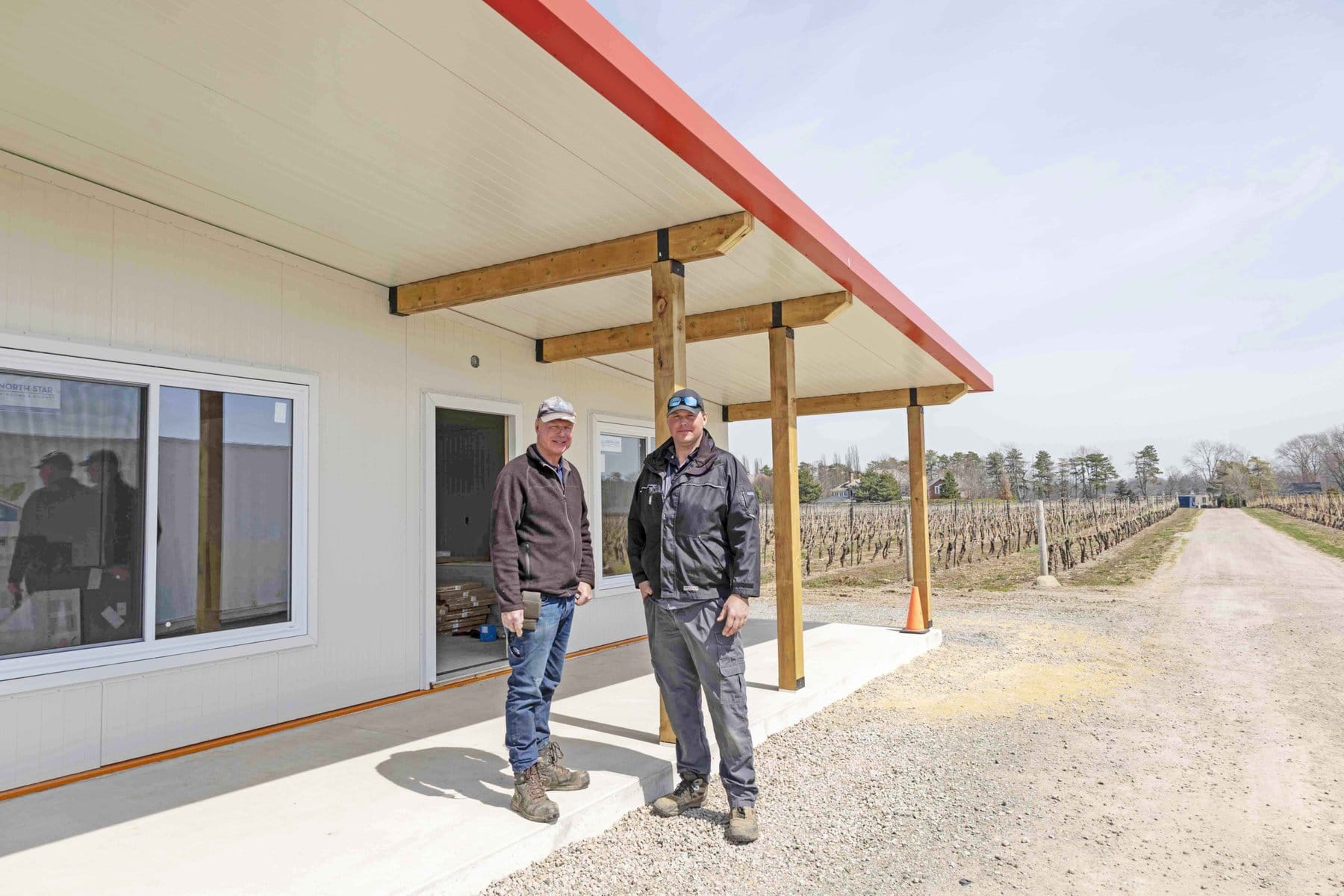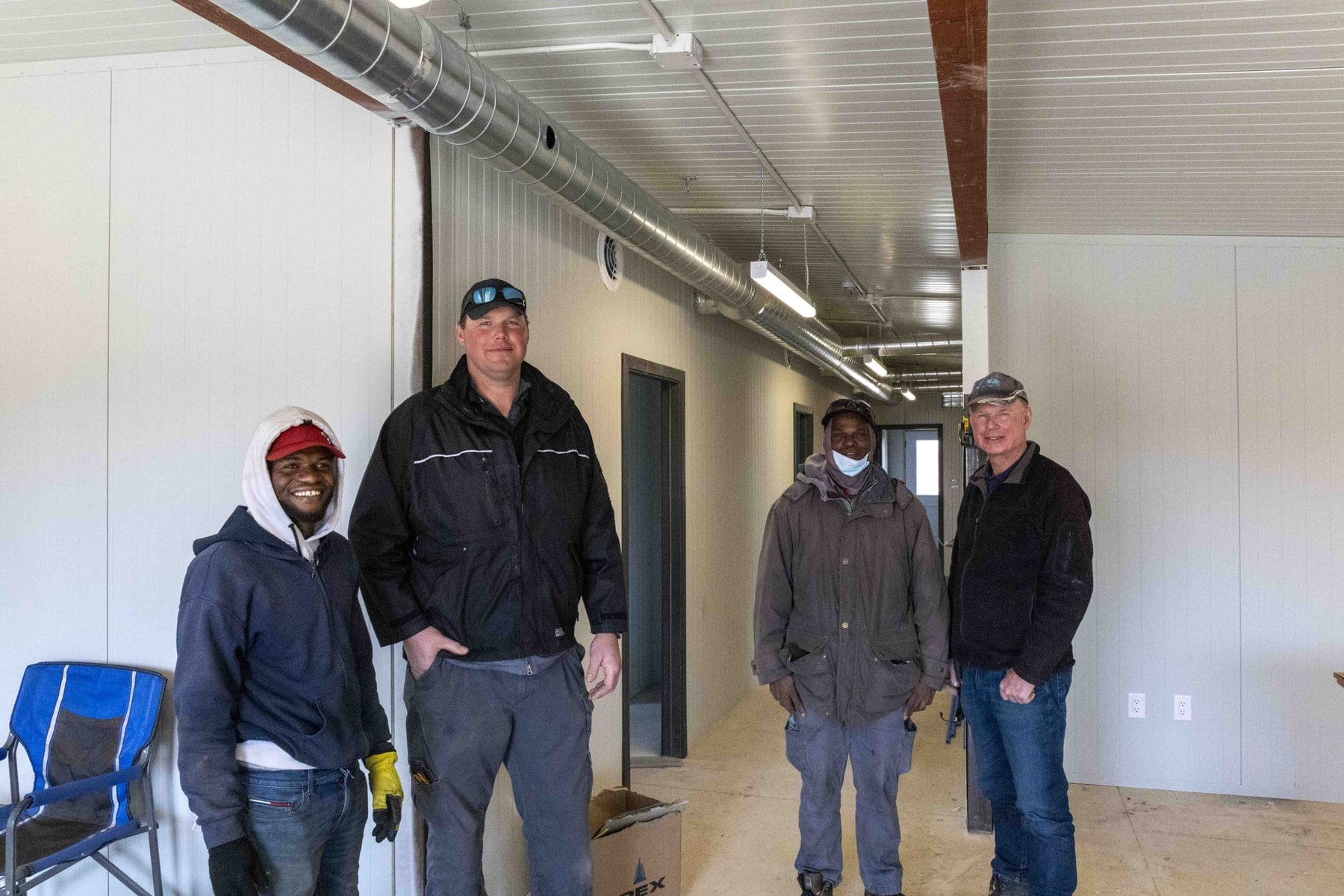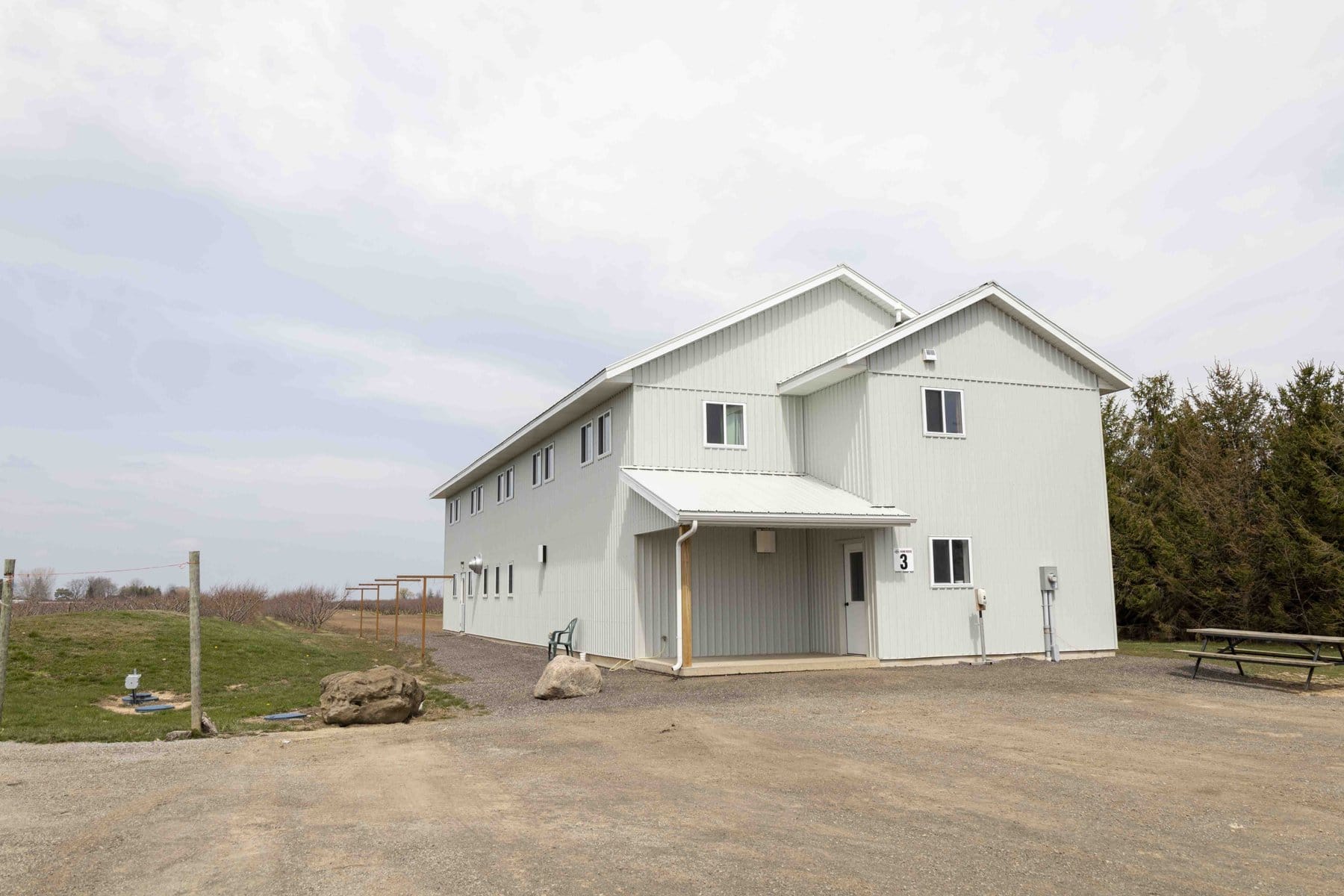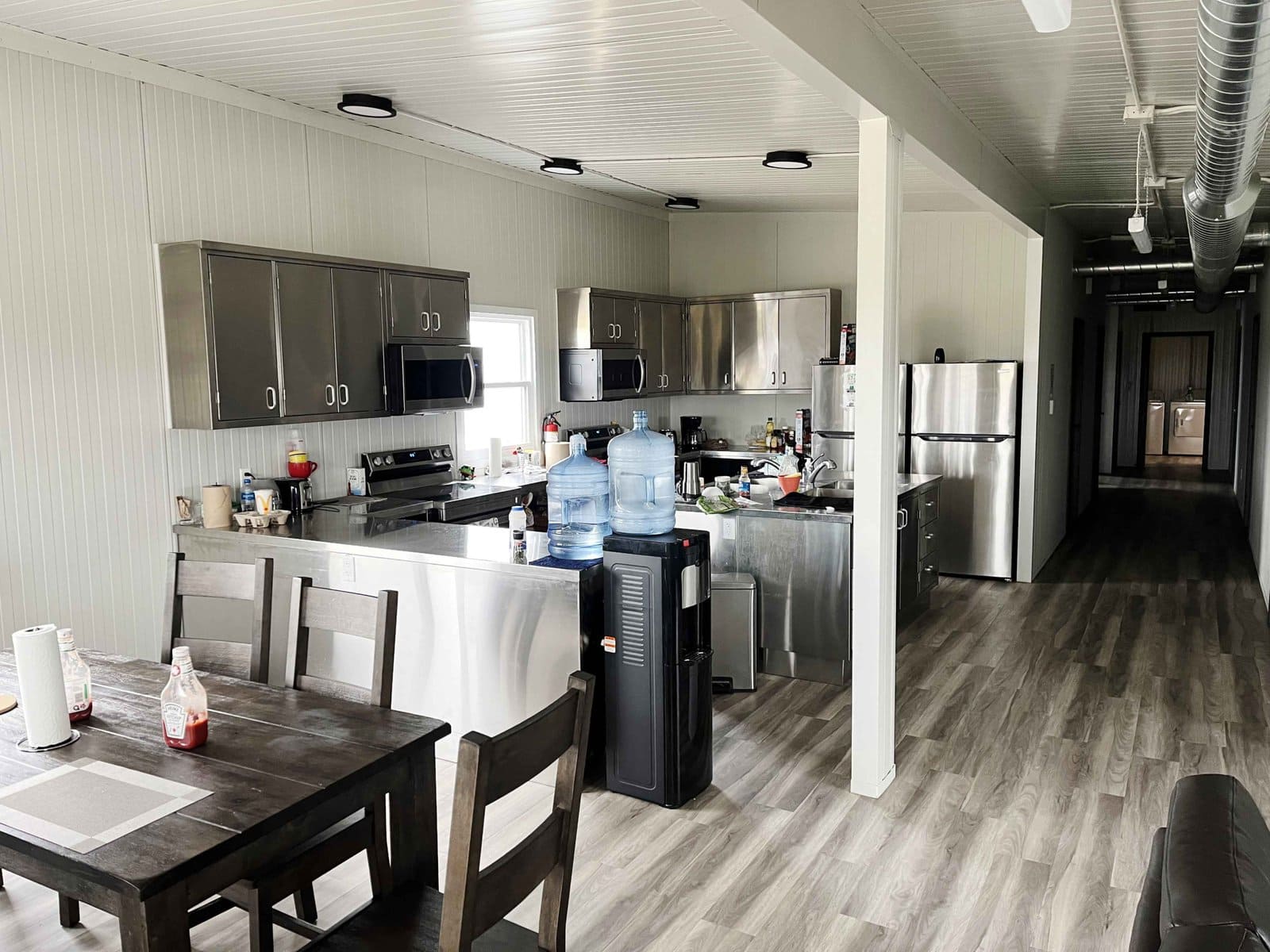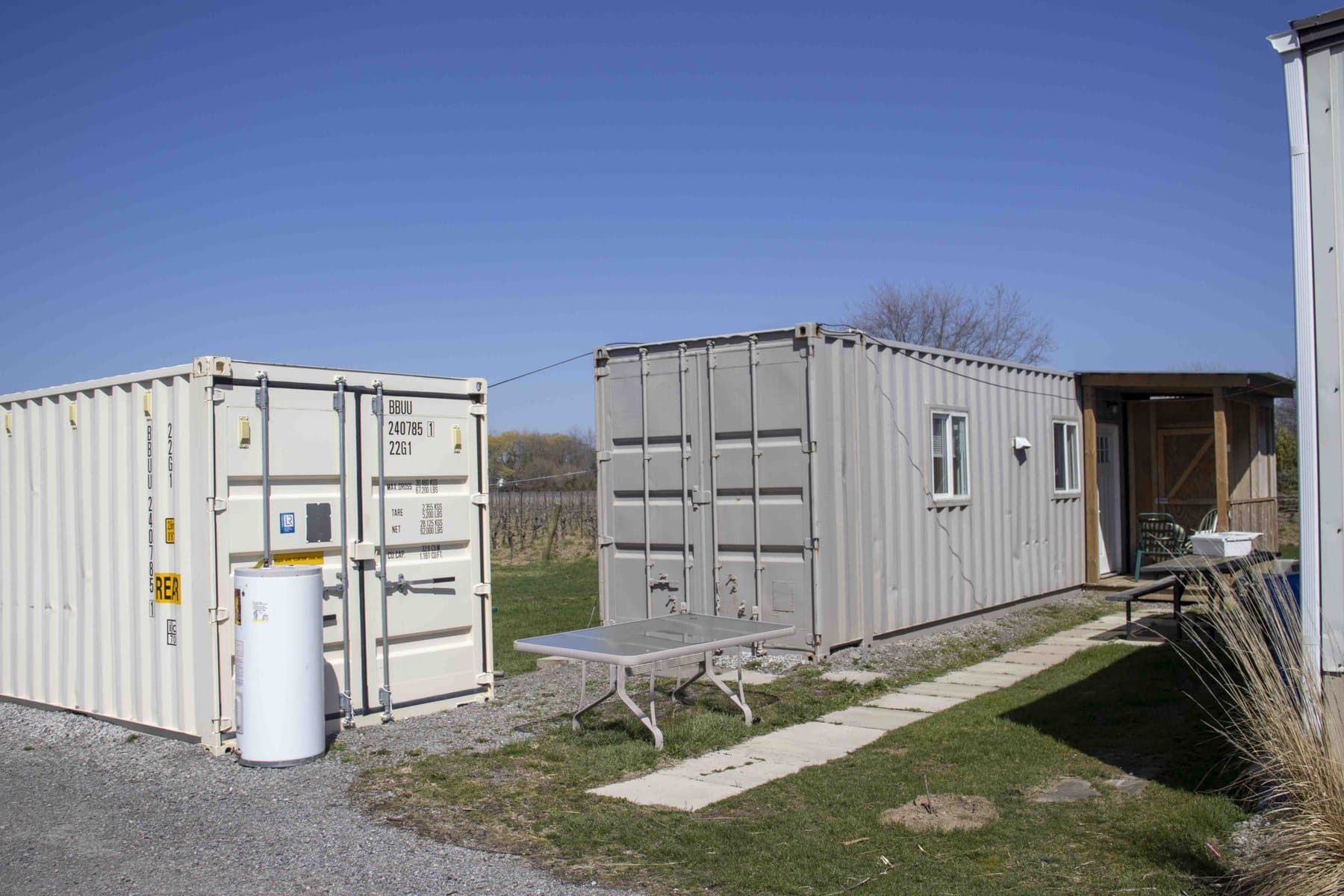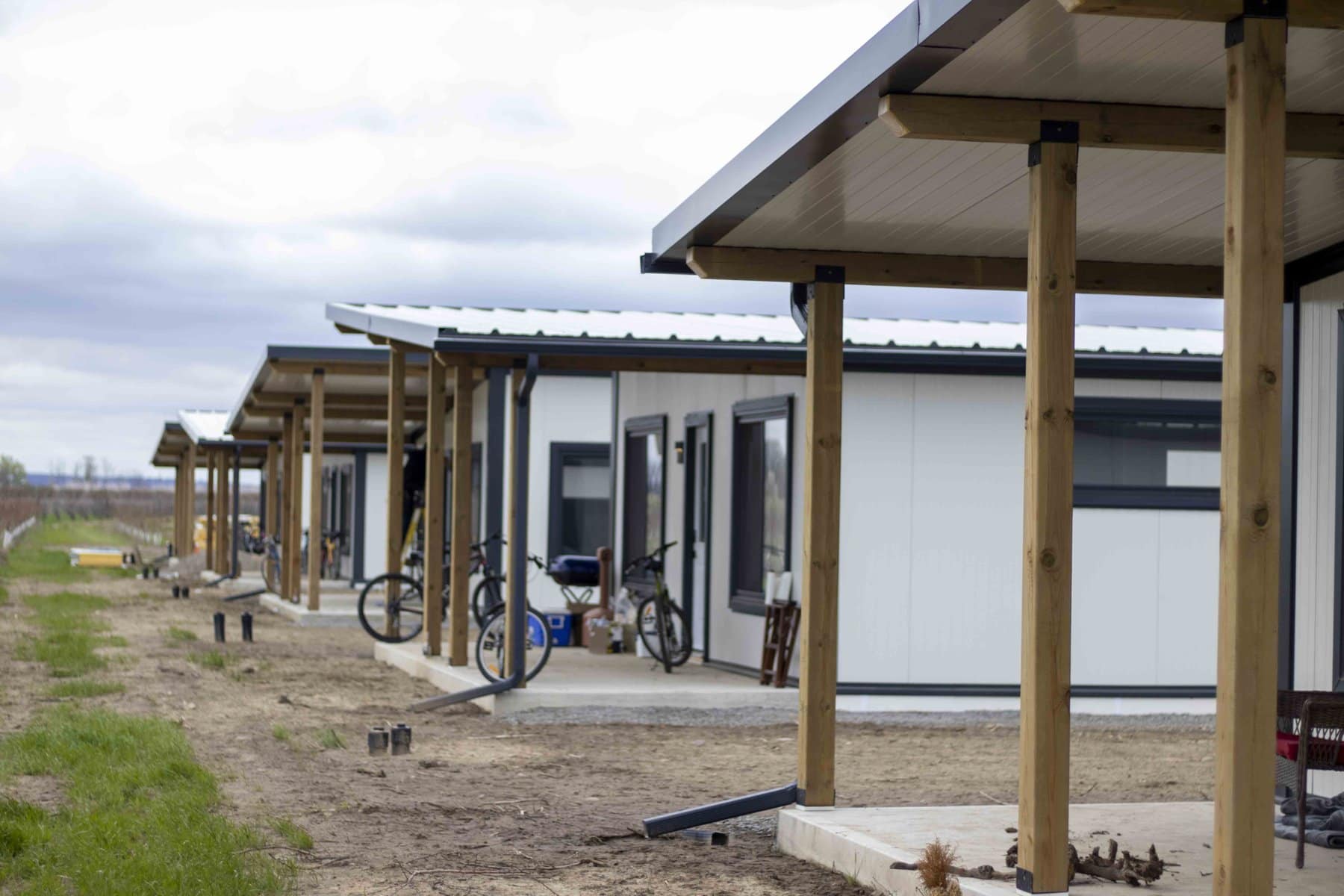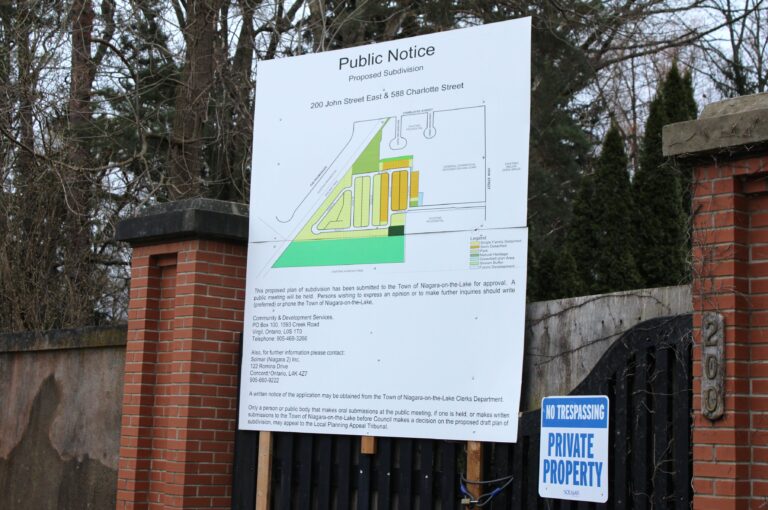Farmers invest millions to build new, modern living quarters
It’s out with the old and in with the new this year at some farms around Niagara-on-the-Lake.
Newly built and extensively renovated bunkhouses for seasonal farmworkers have been popping up, sparked by some major investments by farmers.
Tregunno Fruit Farms, Thwaites Farms, Meyers Fruit Farms and Erwin Wiens Vineyards are among the operations making an effort to improve living conditions for workers.
Tregunno Fruit Farms has built a total of eight new bunkhouses for its workers since 2018.
“We’ve been doing two a year. And this year we did four, actually,” Phil Tregunno, a NOTL farmer and director of Wine Growers Ontario, told The Lake Report.
His four newest bunkhouses are still under construction.
“We’re looking at having (it) finished for the guys to come up for harvest, which is (in) early June,” he said.
Tregunno and Meyers Fruit Farms both said the renovations and additions had nothing to do with criticism about the living conditions at some other Niagara farms.
It was just the right thing to do, especially having weathered the COVID pandemic.
“We don’t want to meet the standards. We want to be ahead of the standards,” said Tregunno.
The planning process for his farm’s four bunkhouses started in January 2022 and the old buildings were torn down last September, said Tregunno’s son Ryan.
The concrete foundations were poured before Christmas and contractors started work early in the new year and have been working ever since at the farm along the Niagara River Parkway, he added.
Tregunno has budgeted $2 million for the construction of the four bunkhouses.
Each bunkhouse will house eight workers, two to a room, with six feet between each bed to meet COVID requirements. The new sleeping quarters replace five older facilities.
The new bunkhouses are each 1,900 square feet and come equipped with a kitchen, sitting area, wifi and a mud room. There’s also a washer and dryer for every eight men. All equipment is new.
The bunkhouses won’t have air conditioning this season, but Tregunno hopes to install it for next year.
The houses all have upgraded electrical service and utilities, new septic systems and new heating systems.
Keeping them well-maintained will be easier since everything is new, said Tregunno.
Tregunno’s farm has been a part of the Seasonal Agricultural Workers Program for more than 50 years and this summer he will be employing 115 seasonal workers.
The program allows Canadian farmers to hire agricultural workers from the Caribbean and Mexico when there are not enough domestic workers to fill positions.
“If we didn’t have the seasonal worker program, there really wouldn’t be much of any agriculture anywhere in Ontario,” said Tregunno.
He said many of the workers who have arrived for the season have said they are happy with the bunkhouses and like that they now have one bathroom for every four workers.
“I really appreciate this. This is very nice,” said Narvil Davis, a seasonal worker from Jamaica who has been working at Tregunno Farms for nine years.
He and co-worker Lamar Minott toured a bunkhouse with The Lake Report.
Davis lives in quarters that are similar to the new builds.
However, this was his first time seeing the inside of the newly built houses and he was impressed.
Davis said he loves his work at Tregunno and never wants to switch farms.
He comes to Canada in February and returns to Jamaica in October. The job helps him support his five kids back home.
Meyers Fruit Farms, a massive operation in the northwest corner of NOTL, also built five new bunkhouses near the corner of Church Road and Stewart Road.
Construction began in the summer of 2022 and workers will be living in the homes for the first time this season.
“Over the years we’ve had these older bunkhouses and we thought we need to change it up,” said Elly Hoff, vice-president of human resources and administration at Meyers.
“We need to just give them what they deserve for the work that they do,” she added.
The 1,904-square-foot bunkhouses can accommodate eight men, two to a room.
“There’s plenty of space. I’ll be very honest. I know it for sure, because I’m living in one of them right now,” she said.
She moved into one of the new builds in the beginning of December after a fire at her home.
“There’s two fridges, two stoves, two microwaves and two double sinks, so that groups of four cook together,” said Hoff.
Each house has a fully-equipped laundry room, two bathrooms, a mud room and air conditioning.
The project cost more than $1 million, which included installation of a new septic system.
This year Meyers Fruit Farm will have about 80 seasonal workers.
Not all workers will be in the new bunkhouses. Some will be living in four other houses that Meyers will be updating.
“One group lives in my mother and father’s old house and so now we’re going to update that and we’re going to update a couple more houses,” Hoff said.
About a year and a half ago Thwaites Farms constructed a new bunkhouse at its operation on Lakeshore Road, too.
It houses 20 men, who each get their own room, farm manager Nelson Thwaites said.
He noted many farmers were hesitant to build new bunkhouses, as there’s been speculation since before COVID that the rules for bunkhouse inspections could be changing.
So, Thwaites Farms came up with a plan that gave, as much as possible, every worker their own room.
“We thought, ‘What could be better than that?’ ” he said.
They took the existing rules and doubled all the requirements.
“We doubled the facilities of everything (the rules) specify, like showers and toilets and sinks,” he said.
The workers are provided with a kitchen, a common area with couches, tables, a TV and wifi. There’s also a washer and dryer.
Thwaites said they sought input from the workers to figure out what they’d like to see.
Thwaites said they ended up creating a mock bedroom in the barn so workers could see what it would look like.
“They do really appreciate it,” he said.
Along with the newly built bunkhouse, they’ve also renovated existing houses and updated others.
Thwaites Farms, which has participated in the seasonal program since 1972, will be home to about 62 workers this season.
The family-run operation is looking to build another bunkhouse and Thwaites estimated it will cost about $30,000 per bed space for a 20-man house.
He noted the workers on the farm are extremely hard-working and reliable.
“They come from a situation where they absolutely need the job as much as we need them to do the job.”
Another farmer, Erwin Wiens, who also is NOTL’s deputy lord mayor, employs eight workers from Jamaica.
He built a new living space for his workers during COVID. Instead of building the average bunkhouse, he decided to build something unique.
He took a 45-foot sea container and turned it into a living space. It cost him about $120,000 from start to finish.
“It turned out super slick,” Wiens said.
He said he treats his workers like family and he wants them to feel at home while they’re in Canada for six to eight months.
He put a bedroom on each end of the container, along with a washroom and a kitchen in the middle.
“What happens now is two guys have their own kitchenette, their own washroom and then their own bedrooms and they also have their own covered porch,” he said.
Two workers live in the modified shipping container and four stay in another bunkhouse beside it. Everyone gets their own room and there are three bathrooms shared among the workers.
Those living in the renovated sea container can go to the common area in the other bunkhouse as well.
Each room is equipped with its own heat and air conditioning so the men can adjust it to whatever temperature they like, said Wiens.
He also bought another sea container and put storage lockers inside so that workers can stash items there rather than in their rooms.
The workers have their own common space, a patio and high-speed internet. Wiens also has vehicles for them to use so that they don’t have to ride their bikes in the dark.
“I look at all my housing (like) if I live in it. Then I’ll let somebody else live in it,” he said.
“And if it’s not good enough for me, it’s not good enough for anybody else.”



